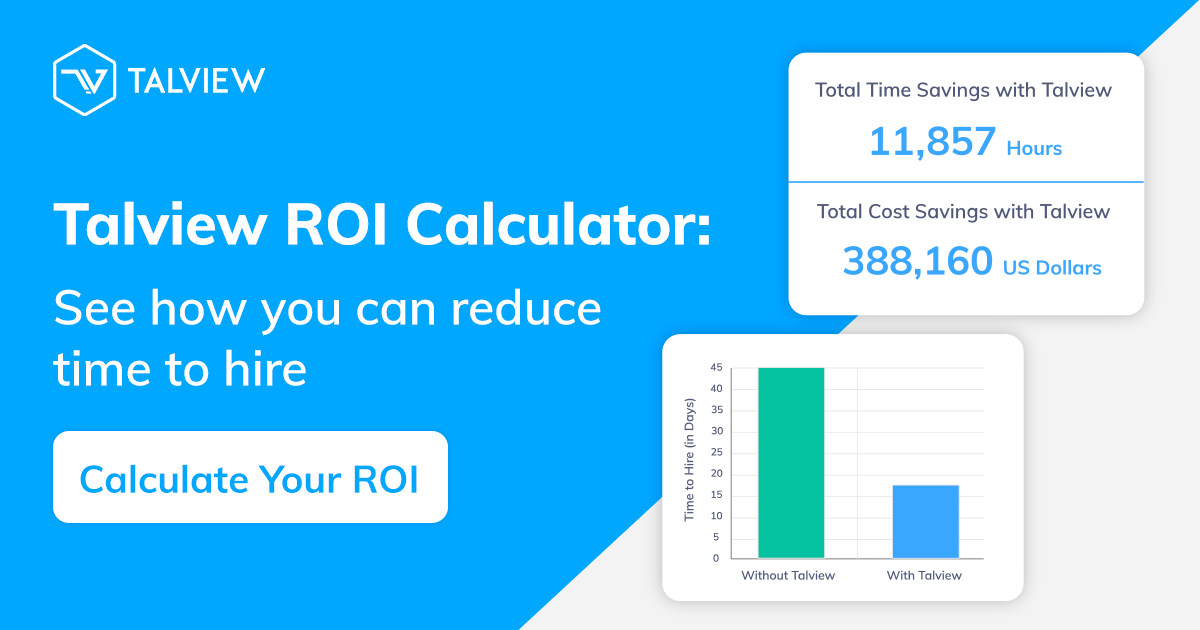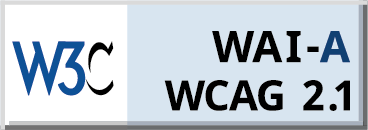Talent acquisition has evolved significantly over the past years, with organizations increasingly emphasizing the need to evaluate and monitor the quality of the hiring process from level zero. Historically, most organizations have found it difficult to identify the hiring practices working in their favor (or not) to recruit quality talent.
Not training interviewers, or framing role-specific questions, or using assessments, or ensuring DEI and legal compliance during interviews – these shortfalls in the hiring process will negatively impact the quality of hire and consequently, business growth. By systematically tracking the quality of hire metric and using past experiences to upgrade future hiring practices, one can steadily improve their quality of hire metrics and develop a competitive workforce.
In this blog, we’ll discuss the quality of hire metric, importance of measuring it, while also talking about how you can seamlessly integrate ethical tech tools such as Interview Insights in your recruitment workflow to measure and improve your organization’s quality of hire.
Quality of Hire: The Golden Recruitment Metric
Quality of hire is one of the fundamental metrics for measuring the efficacy of an organization’s talent acquisition policies. In simple language, the metric aims to gauge the value an employee adds to a company in the long term with regard to meeting the expectations of the role for which they have been hired by the company.
The metric is tracked by analyzing multiple variables, the exact nature and combination of which differ based on the job role and the work involved. By its very nature, the quality of hire metric also reflects how effectively the hiring managers have performed in delivering their mandate of hiring candidates that serve as the right fit for the organization.
Together with other hiring metrics, the quality of hire metric provides valuable insights for decision-makers to make strategic policy changes and ensure that the organization maintains a workforce that is continually equipped to meet the organizational goals.
The Importance of Measuring Quality of Hire
It cannot be stressed enough how vital it is for companies to develop a dynamic, aligned, and resilient workforce that gives them a competitive edge to thrive in these competitive market conditions. Whatever be the scale of technological advancements, it is ultimately the employees that form the bedrock of any business.
“I’m convinced that nothing we do is more important than hiring and developing people.
At the end of the day, you bet on people, not on strategies.”– Lawrence Bossidy, Former COO- General Electric, Former Chairman- Honeywell
Here are six reasons that would give you a better perspective of why it is important to measure quality of hire.
Bad-Quality Hires Dent Profitability
A US Department of Labor Report estimates the cost of bad hires to be approximately 30% of their first-year wages. The short-term direct losses of bad hires arise from wasted onboarding and hiring expenses, salaries, training expenses (if employees are to be retained), plus the cost of finding alternate hires if the employee seems to be a complete misfit.
In addition to these direct hits on financials, if the employee is kept for the long term, the impact is also visible in terms of lost business opportunities, low productivity, failure to meet growth expectations, and an overall inefficient workforce.
Tracking and integrating the quality of hire metrics in your recruitment process works as an antidote to recruiting such bad-quality hires, thereby mitigating any major impact on profitability.
Reduced Time-To-Fill
Quality of hire data can be used to identify bottlenecks in the hiring process. By eliminating these bottlenecks, businesses can reduce the time it takes to fill open positions, which can also reduce the cost-to-hire.
Enhanced Candidate Experience
The quality of hire metrics also provides insights into the overall candidate’s hiring experience. This feedback can be used to make process improvements so that candidates have a positive experience from start to finish.
Improved Hiring Accuracy
As the quality of hire measures the effectiveness of your recruitment methods, it allows businesses to fine-tune their hiring process to attract high-quality candidates. This can help to reduce time and cost wastage associated with recruiting low-quality candidates.
Increased ROI From Recruiting
By making more effective hires, businesses can see a significant return on their investment in recruiting. Quality hires are more productive, stay with the company for longer, and might require less training than average quality hires.
Helps Businesses Pursue Goals More Confidently
97% of employers believe that team alignment is crucial to ensure the success of any project. Organizations measuring quality of hire are better equipped to shortlist candidates constituting the right fit for their culture and organizational mix, thereby ensuring they build a team that is aligned with each other on the broader work aspects.
The result is a net-net win, as employees are happy working with like-minded people while businesses achieve their targets more smoothly without facing significant employee issues.
Key Stats & Facts About Quality of Hire
- As per Talview’s talent acquisition report, about 43% of the hiring executives' top priority is to improve their quality of hire metric.
- 39% of the talent acquisition leaders agree that the quality of hire metric is the most valuable metric for measuring performance.
- A recent study, Talent Measurement for Data-Driven Hiring Decisions, reports companies using candidate insights can better their quality of hire.
- Companies that improve the quality of hire are more likely to witness an improvement in their first-year performance by 3x.
- About 62% of the companies that improved their quality of hire had executed a strong hiring strategy.
- Organizations investing in an improved candidate experience improve quality of hire by 70%.
5 Factors Determining Quality of Hire
Below are some key indicators that help determine the quality of hire.
Employee Retention
Employee retention is a measure of how long employees stay with an organization. The longer they continue in their roles, the more likely they will be content with the job while being successful in their roles.
Employee retention rate can be calculated by dividing the number of employees at the end of a given period by the number of employees at the inception of that period. You can easily determine your hire quality by tracking the retention rate and the top-performing employees in an organization.
You can also use the turnover rate to calculate the quality of hire, which is simply the inverse of the employee retention rate.
Job Fit
Another factor that determines the quality of hire is job fit. Job fit is the degree to which an employee’s skills, values, and goals match the requirements of the position they are hired for.
A good job fit means that the employee is more likely to be satisfied with their role, stay with the company for a more extended period of time, and be productive while performing their task.
There are several methods to determine whether a new hire is job fit. One way is to monitor their performance during the probationary period. This will give you an indication of whether they are able to do the job efficiently.
Attrition Rate
Attrition rate or the churn rate refers to the number of people leaving an organization over a specific period. The attrition rates are usually discussed as an annual percentage, with benchmark averages varying across industries.
While some churn is natural, and in fact healthy, above-average attrition rates are telltale signs of an ineffective hiring policy or an unsatisfactory work environment. Either way, high attrition reflects negatively on the quality of hire metric and should be corrected immediately to minimize recruitment costs for hiring replacements.
Cultural Fit
Cultural fit is the degree to which an employee’s values and beliefs match those of the company. A good cultural fit means that the employee is more likely to be comfortable in the workplace and stay with the organization for a longer period.
Cultural fit is an important factor to consider when hiring new employees because it can significantly impact job satisfaction and employee retention.
A culture fit survey is a great way to find out if your new hire is able to embrace and enjoy their work environment. Another way to assess cultural fit is to use employment assessment, such as personality tests.
The Formula for Measuring Quality of Hire
The process to measure the quality of hire depends on the job role and the factors that an organization deems important to track the metric. There is no standard formula to measure the quality of hire metric, and it might need several iterations before you can arrive at a combination of factors that work best for your organization.
However, a basic framework to measure the quality of hire can be derived from this formula:
Quality of Hire formula = (Indicator 1% + Indicator 2% + Indicator 3% + Indicator 4% …) / (total number of indicators)
The higher the average percentage, the better the quality of hire.
How to Improve Quality of Hire
Given the wide scope of quality of hire, it is imperative to first ascertain the factors being considered for calculating the quality of hire. The next step is analyzing each factor and setting clear benchmarks for each of them to help the team make correct decisions. The benchmarks should be reviewed regularly so that it best reflects the present market trends.
For example, attrition rate for industries like IT is readily available online, so it is prudent to pull data from relevant industry bodies every year and set that number as your benchmark attrition rate. If the attrition exceeds that, then the internal attrition may be tagged as high or extremely high, as might be the case.
Apart from the measurement perspective, a few practical ways to increase the probability of hiring quality employees are:
- Identify hiring practices that bring in quality hires and stick to them.
- Design a structured interview policy with a clear list of dos and don’ts to ensure consistency in hiring practices and a rich candidate experience.
- Create a quality talent pool by ensuring stringent pre-interview screening and assessments.
- Ensure that the interviewers are well-trained to conduct in-depth and meaningful interviews.
Use of Technology in Improving Quality of Hire
Leveraging technology throughout the hiring process can improve the quality of hire and save time and resources for the company. For example, you can use an automated chatbot to screen candidates that can engage with them and ask relevant questions to shortlist the most qualified candidates.
Artificial intelligence (AI) can also be used in different ways to help improve your recruitment quality. It is beneficial to gain insights into the behavior and performance qualities of top talent, measure the quality of your interview process, and receive data analytics that can be used to identify patterns and trends essential for making better hiring decisions.
How Talview Interview Insights’ AI Prowess Improves Quality of Hire
Talview Interview Insights is an ethical AI-based hiring solution that helps organizations better the quality of their hire. It combines with the power of video interviewing and AI that allows companies to:
- Analyze the interview conversations and gain insights into the candidate’s performance.
- Get feedback on the interviewer’s ability for improvement.
- Ensure that the interviews are in alignment with the organizational policies.
- Monitor and flag instances in the interview for any unconscious bias.
- Generate searchable interview summaries and transcripts.
- Improve the candidate’s overall interview experience.
Additionally, Talview Interview Insights can assist organizations in reducing time-to-hire, improving interview consistency, and making data-driven hiring decisions. Given the efficiencies it brings in the overall hiring process, the tool has also been awarded as one of the top HR-tech products from a pool of 150+ solutions in 2022.
Conclusion
Improving the quality of hire is essential for every organization as it can help to reduce turnover rates, save time and resources, and improve the overall performance of the company. With the right tools, talent acquisition teams can align their hiring process to gain an edge in today’s highly competitive market.
Talview offers AI-powered platforms that can help to improve all the different aspects of the hiring process, from candidate screening to interview analysis. It provides a one-stop hire quality solution that fits all your recruitment, assessment, and proctoring needs.
Focusing on large-scale hiring events, Talview’s latest Hyperscale Hiring Module facilitates a seamless hiring process. Talview presents a day of learning to overcome the challenges of mass hiring at scale, networking with fellow professionals, and a very special meal. We hope you’ll join us!









Leave a Reply